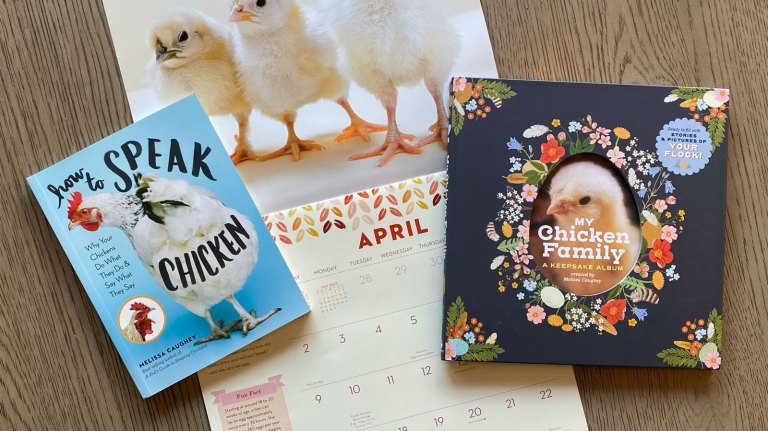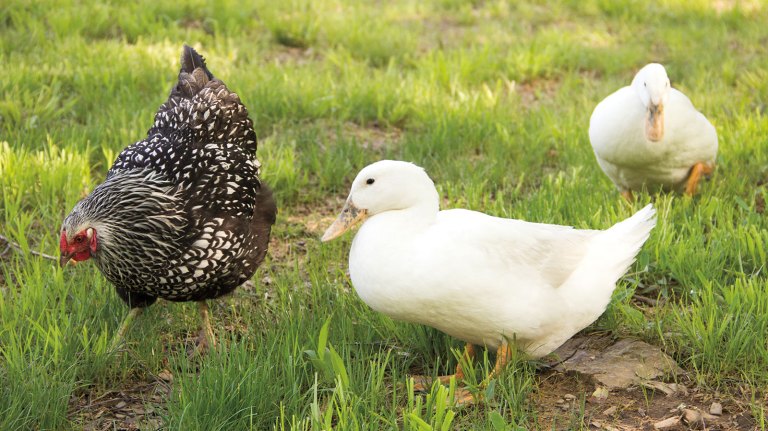Frozen in Time

In 1871 Richard L. Maddox revolutionized photography by inventing the dry plate process. Using this splendid new technology, traveling photographers no longer relied on cumbersome, portable darkrooms to ply their trade. And since the process was far more sensitive to light than the wet plate process used to that point, relatively fast shutter speeds were possible and carefully held poses no longer a must.
Then the early 1900s ushered in the golden age of postcards. According to U.S. Post Office figures, 677,777,798 postcards were mailed in the fiscal year ending June 30, 1909, at a time when the total population of the United States was scarcely 88,700,000 souls! Not surprisingly, camera makers honed in on a need and began producing cameras that shot real picture postcards, such as the 3A Folding Pocket Kodak Camera. In 1903 such a camera fitted with a quality lens cost as much as $78; according to Measuring Worth; Relative Value of the U.S. Dollar, that’s $1,968.77 in 2009 funds.
What is surprising, however, is that affordable postcard-format cameras like the Chicago Ferrotype Company’s Mandel-ette postcard camera soon emerged. These were simple box cameras with fixed-focus lenses. In the back of the camera was a black changing bag through which the photographer moved an exposed paper negative to the built-in developer tank attached to the bottom of the camera. Pictures on the spot! The best part was that the Mandel-ette, complete with tripod and enough material for 116 postcards, cost the grand sum of $7.75 ($173.81 in today’s funds) in 1913. Itinerant photographers snapped them up and took to the road.
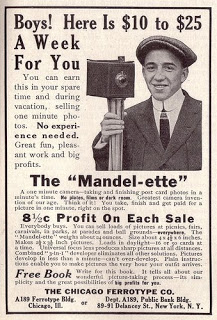
Among them was a special class of men — children’s photographers, who traveled with a pretty pony, a donkey, or a handsome goat-drawn cart to act as props. Between the first decade of the new century and the early 1960s, thousands upon thousands of smiling youngsters posed for their portraits holding the reins of the photographer’s sidekick—sometimes in costumes (provided by the photographer) and sometimes wearing the dress of the day. Since this was an era when few everyday families could afford a camera, picture-taking day, especially if they were being posed with a photographer’s trusty friend, was a highlight in many young lives.
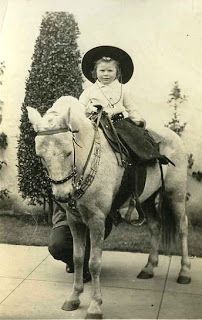
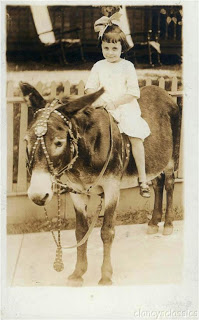
These sweet souvenirs of days gone by are today’s popular collectibles. I collect them myself and like to use them in the books I write. Many grace the pages of The Donkey Companion, and we’ll feature them in Get Your Goat! as well.
One of the beauties of traveling children’s photographers’ photos is that they’re inexpensive (few in my collection cost more than $10 apiece) and readily available. I find most of mine on eBay, though flea markets and antique shops are fertile hunting grounds, too. Older relatives often have these winsome photos tucked away; ask!
Most of these pictures are printed on postcard backs. Most are 3¼”×5½” in size, but Mandel-ette cameras produced a 2½”×3½” card, though larger or smaller postcard backs could be used (the smallest, a mere 1¾”×3″ in size).
Sometimes details of the child (or children) are written on the back of vintage picture postcards, sometimes not. When not, there are several ways to determine roughly when the photo was made (collectors of goat and goat-wagon pictures are in luck; “goat men” often decorated their props with the names of towns they were working in, along with the year).
Undivided-back cards were printed and mailed between 1901 and 1907. Only the sender’s address—no other writing—was permitted on the back of the card. Messages, if any, were written on the photo itself. On March 1, 1907, the United States Post Office okayed the divided-back card; the address was to be written on the right side and any message to the left.
The postage on mailed cards sometimes dates them, too. Between 1872 and 1917 a 1¢ stamp mailed a card anywhere in the United States. As a wartime measure, postage rose to 2¢ in 1917, then dropped back to 1¢ in 1919. A penny carried a postcard to its destination until 1952, so most of these cards bear 1¢ stamps.
Paper manufacturers marked their postcard backs in various ways; if you can identify the paper manufacturer, you can approximate the age of the card. Stamp boxes (the area where the stamp is to be placed) varied widely from maker to maker, as did material printed on stamp backs, the top portion of the back that doesn’t include the stamp box.
Studying the photo itself may help do the trick. What are people wearing? Are there vehicles or architectural structures in the background you can date? Is there a flag in the picture (flags were popular props with some photographers); if so, with how many stars?
Besides making fun illustrations for books like mine, these treasures shine as wall décor and just plain interesting collectibles. Their value is largely subjective: while investment-minded collectors avoid damaged cards like the plague, many of my favorites have a folded corner or a ding or two. Smiling children and a clean, well-cared for animal are my first concern; if the photo has been lovingly handled, so much the better. These treasures are perishable and should be framed or stored using archival materials.
Sue Weaver sold her first freelance article in 1969. Since then her work has appeared in major horse periodicals, including The Western Horseman, Horse Illustrated, Chronicle of the Horse, Flying Changes, Horseman’s Market, Arabian Horse Times, The Appaloosa News, The Quarter Horse Journal, Horse’N Around, and The Brayer. She has written, among other books, Storey’s Guide to Raising Miniature Livestock, The Donkey Companion, and Get Your Goat! to be published in 2010. Sue is based in the southern Ozark Mountains in Arkansas.

